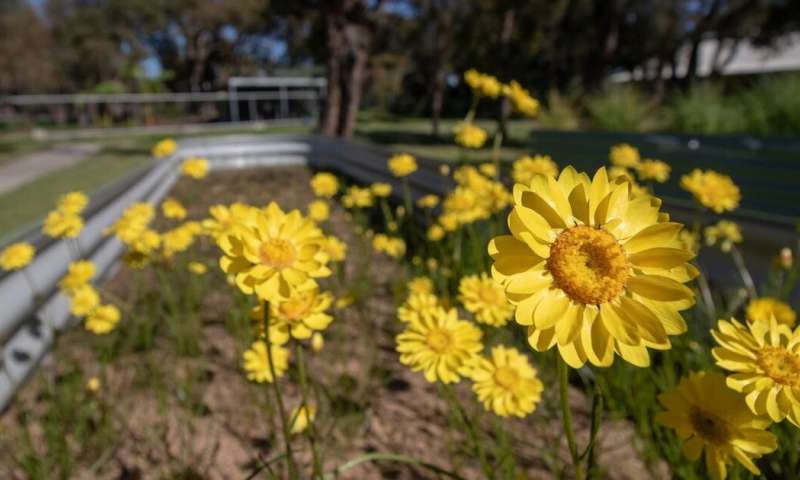The showy everlasting is being grown at Woodlupine Primary School. Credit: Andrew Crawford, Author provided Western Australia boasts seemingly endless fields of pink, white and yellow everlasting daisies. But while there might seem to be an infinite number, one species in particular is actually endangered . The showy everlasting (or Schoenia filifolia subsp. subulifolia ) once grew in the Mid West of WA. Now it is found in just a few spots around the tiny inland town of Mingenew. But a WA primary school is helping my colleagues and me save the beautiful showy everlasting. With new seed banks, a genetic project and a whole lot of digging, we’re hopeful we can keep this gorgeous native daisy around for the next generation. A grower and a shower The first European to collect the showy everlasting was eminent botanist James Drummond, most likely in the mid-1800s. Initially the species was placed in the Helichrysum family (a group of plants also known as everlastings), but in 1992 botanist Paul Wilson formally described the species based on a specimen collected from Geraldton. The genus name Schoenia is in honor of the 19th-century eye specialist and botanical illustrator Johannes Schoen, and the species name filifolia refers to its long, slender leaves. Everlastings get their name from the fact that that the flowers hold their color long after they have been picked and dried. The species is known as the showy everlasting because its large, brightly colored flowers put on a spectacular show when in bloom. The showy everlasting is an annual plant, growing around 30cm high, with long narrow leaves. Its bright yellow flowers bloom from August to October. The showy everlasting has two closely related sister species: the more common Schoenia filifolia subsp. filifolia , found throughout the WA Wheatbelt, and Schoenia filifolia subsp. arenicola , which grows around Carnarvon but hasn’t been collected for decades. The main differences between the showy everlasting and its sister species are the much larger flowers and the shape of the base of the flower, which is hemispherical rather than vase-shaped. Collections of the showy everlasting […]






